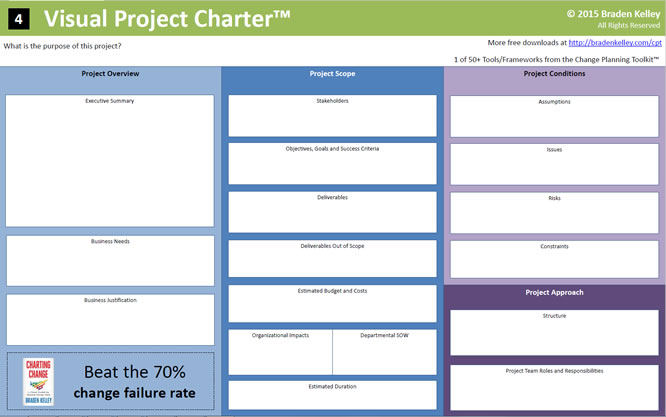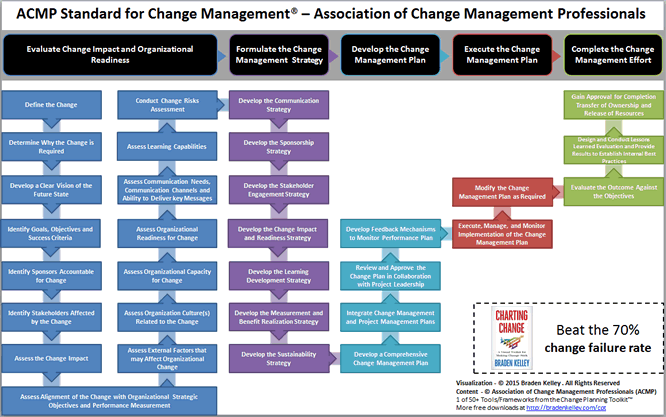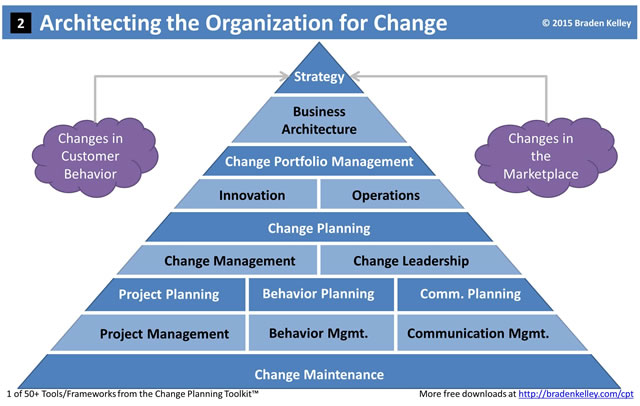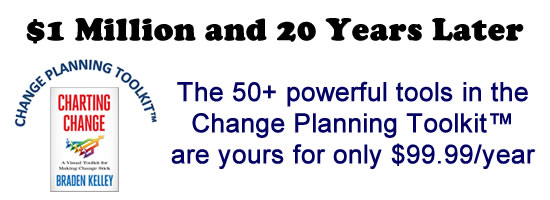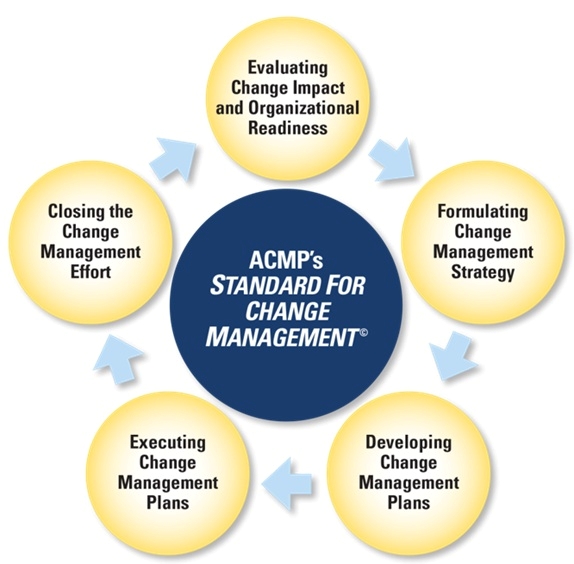
The truth is that for most of us project managers, whether we want to admit it or not, the process of creating a project charter is one that we often dread.
We sit there in front of a Microsoft Word template blinking at us on the screen and realize just how much missing or incomplete information we have when we begin typing into the one of the very first, and potentially most important artifacts for any project.
We know we face the sending of a series of emails, follow up emails, follow up to the follow up emails, and maybe even some escalation emails and phone calls just to get the information we need to create the first draft of a project charter. And that’s before we even begin trying to get alignment, buy-in, and sign-off on the document.
Now, add in the challenges of trying to create a project charter when everyone is working remotely and our sacred task of initiating a project doesn’t get any easier.
So, there has never been a better time to leverage the Visual Project Charter™.
The Visual Project Charter™
With online whiteboarding tools like Mural, Miro, LucidSpark and Microsoft Whiteboard you can easily download the Visual Project Charter™ for FREE as a JPEG and upload it as a background to place digital sticky notes on as you collaborate with cross-functional team virtually using Zoom, Cisco WebEx or Microsoft Teams.
Click here to access the PDF poster (35″x56″) and JPEG of the Visual Project Charter™
To help give you a better idea of how easy this is to do and what it might look like, I created the following short six-minute video introduction to the Visual Project Charter™ to show how easy it is to take the JPEG and upload it as a background into online whiteboarding tools like Mural, Miro, LucidSpark or Microsoft Whiteboard where you can place digital sticky notes instead of real ones as you collaborate with cross-functional team virtually using Zoom, Cisco WebEx or Microsoft Teams.
Click here to access the PDF poster (35″x56″) and JPEG of the Visual Project Charter™
Remote Project Management
Whether you download the Visual Project Charter™ PDF and print it as a poster (35″x56″) or use the JPEG in the digital world I’m sure you’ll agree that this a much more visual, collaborative, enjoyable and effective way to gather all of the information to populate your project charter and build the buy-in and alignment necessary to make your project a success!
Here is a step-by-step guide for how to use the Visual Project Charter™ with online whiteboarding tools like Miro, Mural, LucidSpark and Microsoft Whiteboard:
- Download the Visual Project Charter™ from this web site
- Create a new workspace in your online whiteboarding tool (Miro, Mural, LucidSpark or Microsoft Whiteboard)
- Upload the JPEG version of the Visual Project Charter™ to your online whiteboarding tool
- MIRO – ‘Upload->My Device’ (left side icons)
- MURAL -‘Images->import images’ (left side icons)
- LUCIDSPARK – ‘Insert->Images’ (under hamburger menu on the top)
- WHITEBOARD – ‘Images->Library Image’ (bottom icons)
- Resize the JPEG image after it is added
- Lock the JPEG image down so people can’t move it around when placing their sticky notes
- Create work areas around the Visual Project Charter™ to give you larger, targeted areas to work (if desired)
- Plan and execute your cross-functional team meeting to populate the Visual Project Charter™ via Zoom or Cisco WebEx or Microsoft teams when the workspace is built
- Have fun!
- Use the results of your Visual Project Charter™ session to create a traditional project charter and route it for signatures
(both JPEG and PDF)
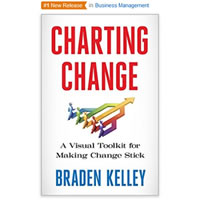 I’m sure you’ll get a lot of value out of the Visual Project Charter™, especially when using it as part of your remote project management best practices.
I’m sure you’ll get a lot of value out of the Visual Project Charter™, especially when using it as part of your remote project management best practices.
And, if you like the Visual Project Charter™, you will LOVE the Change Planning Toolkit™ and should definitely pick up copies of my books:
![]() Sign up here to get Human-Centered Change & Innovation Weekly delivered to your inbox every week.
Sign up here to get Human-Centered Change & Innovation Weekly delivered to your inbox every week.
